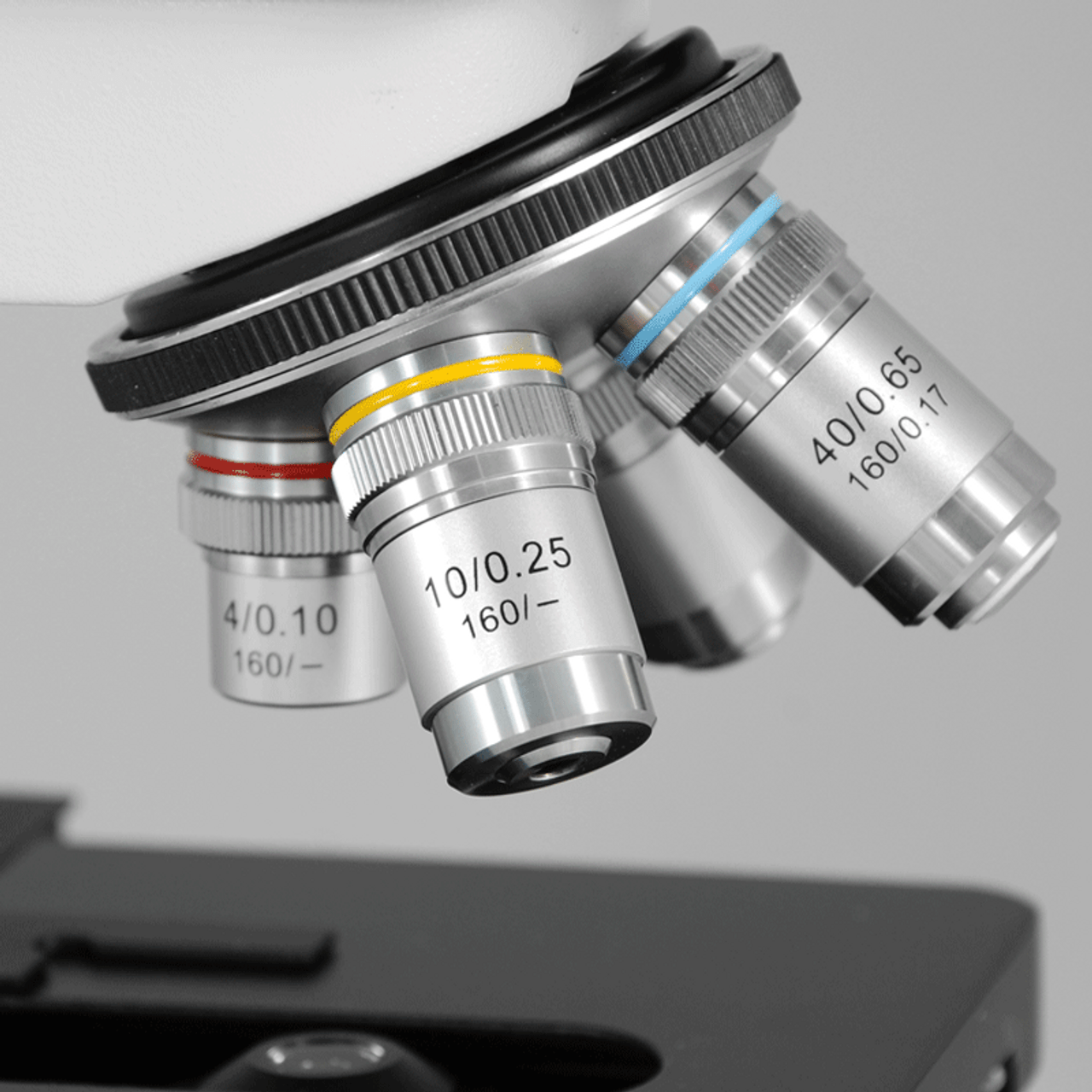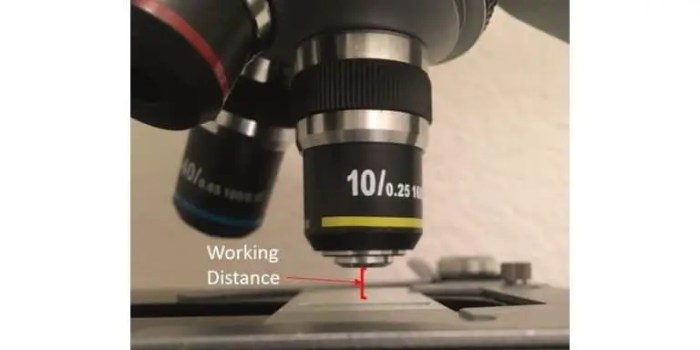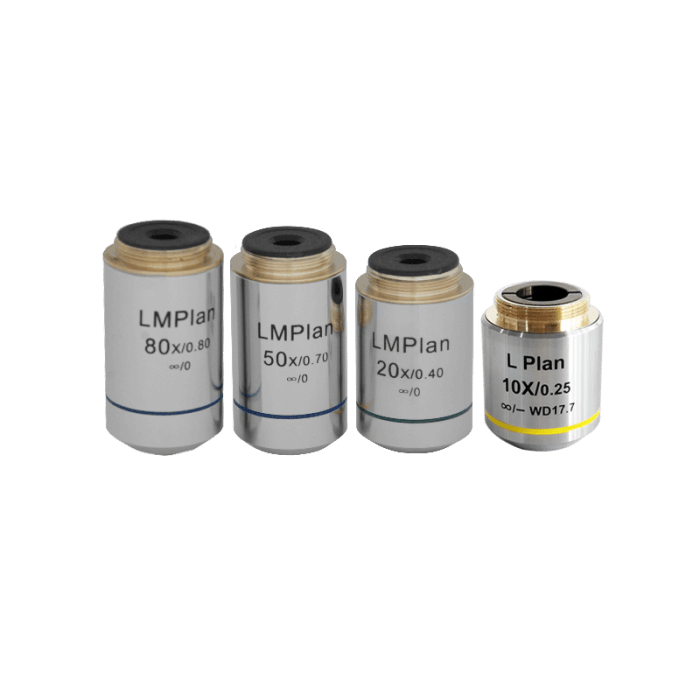The working distance for a 10x objective lens is a crucial factor in microscopy, influencing image quality, resolution, and sample preparation. This guide delves into the concept of working distance, exploring its significance, measurement techniques, and applications in various microscopy techniques.
Understanding working distance empowers microscopists to optimize experimental outcomes, troubleshoot issues, and achieve high-quality images. Join us as we unravel the intricacies of working distance, providing practical insights and comprehensive knowledge.
1. Working Distance Definition

In microscopy, working distance (WD) refers to the distance between the front lens element of an objective lens and the surface of the specimen being observed. It plays a crucial role in selecting the appropriate objective lens for a particular application and ensuring optimal image quality.
2. Factors Affecting Working Distance
The working distance of an objective lens is influenced by several factors, including:
- Lens Design:Different objective lens designs have varying working distances. Planar lenses typically have shorter working distances compared to semi-plan and apochromatic lenses.
- Refractive Index of Immersion Medium:When using immersion oil or water, the refractive index of the medium affects the working distance. Higher refractive index media reduce working distance.
3. Working Distance Measurement
Measuring working distance accurately is essential for proper microscopy setup. Two common methods are:
- Mechanical Method:Using a gauge or caliper to measure the distance between the objective lens and the specimen.
- Optical Method:Observing the image of a micrometer slide or graticule placed on the specimen and measuring the distance between the focused image and the lens.
4. Impact of Working Distance on Microscopy Applications
Working distance has significant implications for various microscopy techniques:
- Brightfield Microscopy:Shorter working distances allow for closer proximity to the specimen, resulting in higher magnification and resolution.
- Fluorescence Microscopy:Long working distances are preferred to accommodate bulky fluorescence filters and minimize background noise.
- Confocal Microscopy:Working distance affects the depth of field and the ability to capture high-resolution images of thick specimens.
5. Applications of Working Distance
Working distance plays a crucial role in specific microscopy applications:
- Live Cell Imaging:Long working distances enable live cell observation without disturbing the specimen.
- Microinjection:Short working distances facilitate precise manipulation of cells using micropipettes.
- Sample Preparation:Working distance influences the thickness of cover slips and mounting media used.
6. Troubleshooting Working Distance Issues, The working distance for a 10x objective lens is
Common working distance issues and troubleshooting strategies include:
- Insufficient Working Distance:Use an objective lens with a shorter working distance or adjust the stage height.
- Excessive Working Distance:Use an objective lens with a longer working distance or add a spacer between the objective and the specimen.
- Image Distortion:Ensure that the objective lens is properly aligned and the specimen is flat.
User Queries: The Working Distance For A 10x Objective Lens Is
What is the definition of working distance in microscopy?
Working distance refers to the distance between the front lens of an objective lens and the surface of the specimen being observed.
Why is working distance important in objective lens selection?
Working distance determines the space available for sample manipulation, immersion media, and other accessories, affecting image quality and experimental flexibility.
How is working distance measured?
Working distance can be measured mechanically using a depth gauge or optically using a graticule.
How does working distance impact image quality?
Working distance affects the numerical aperture of the objective lens, which influences image resolution and depth of field.
What are some applications where working distance plays a crucial role?
Working distance is critical in fluorescence microscopy, confocal microscopy, and microinjection techniques, where precise sample manipulation and immersion media are required.

